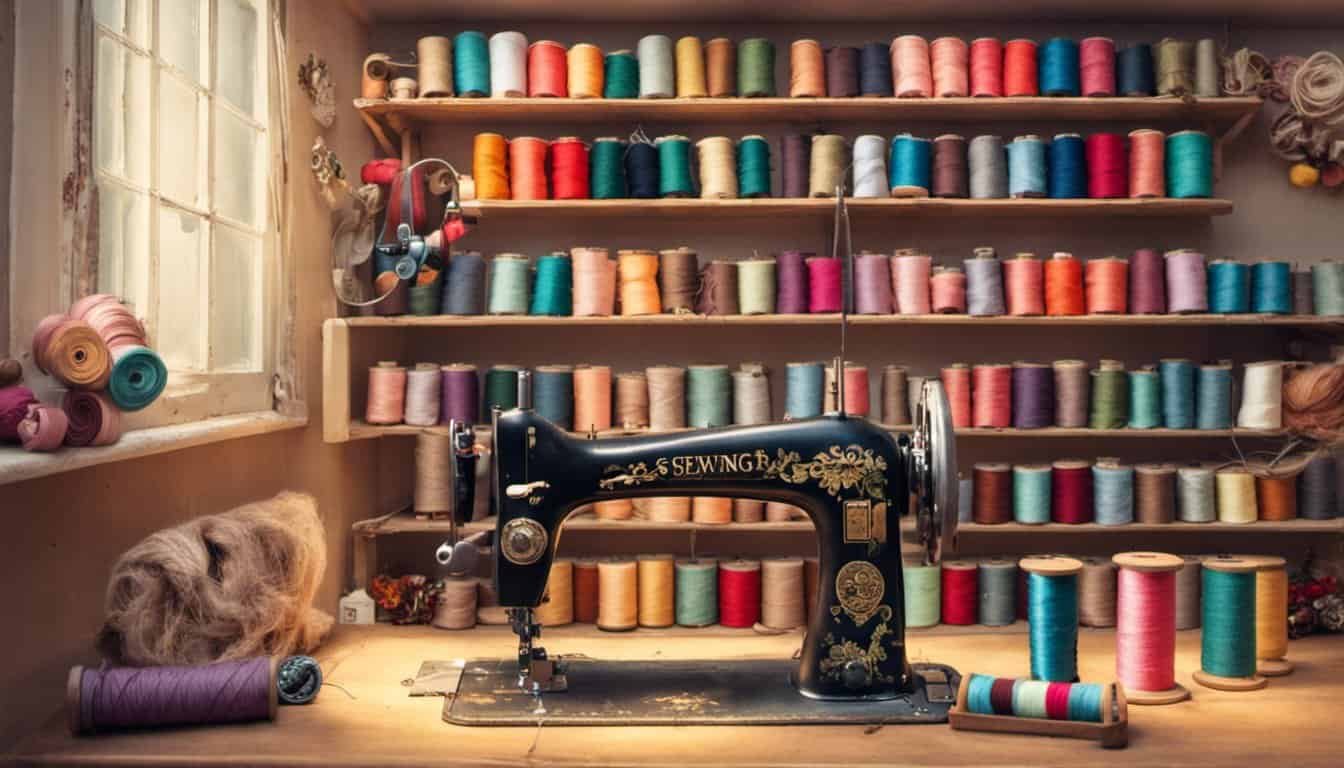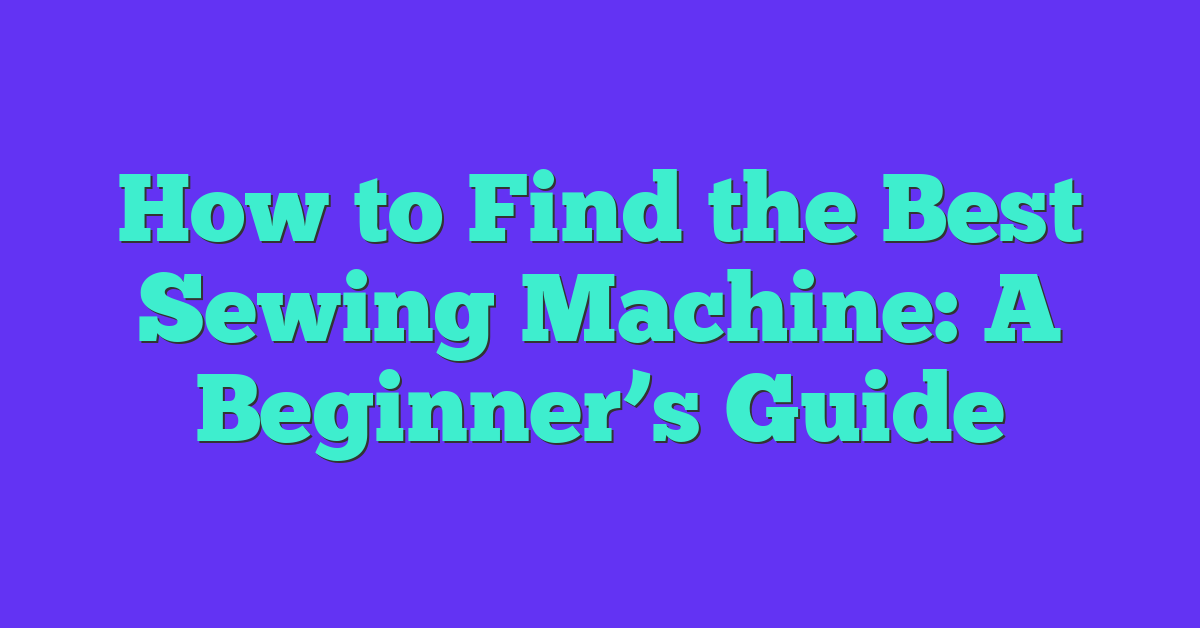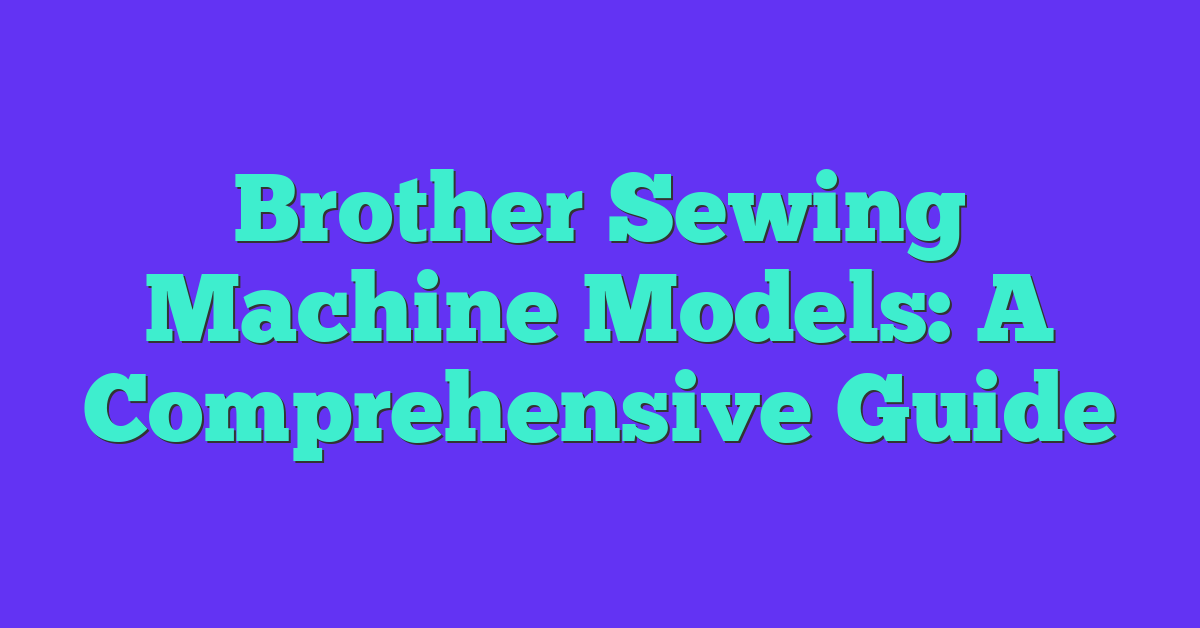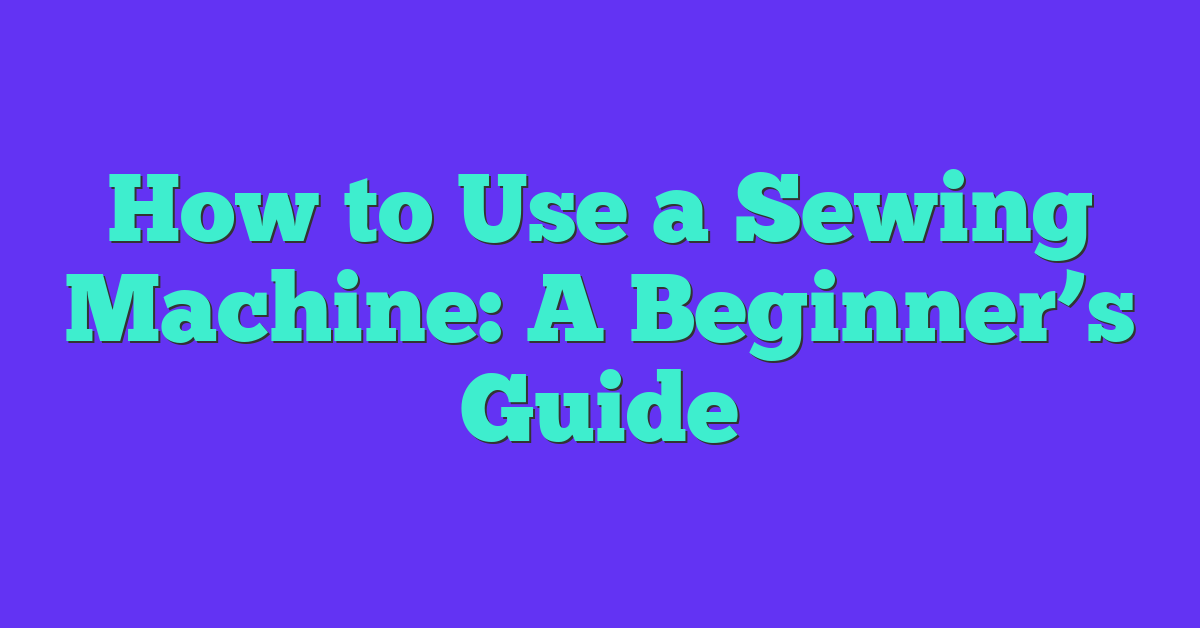Ever wanted to dive into the captivating world of steampunk? Creating your own steampunk costume is a fantastic way to express your creativity and embrace this unique aesthetic. With the right sewing techniques and a bit of imagination, you can craft a look that’s both stylish and full of character.
In this guide, you’ll discover step-by-step instructions to sew your perfect steampunk ensemble. From selecting the right fabrics to adding those signature gears and accessories, we’ll help you bring your vision to life. Get ready to embark on a fun and rewarding crafting adventure that will make your steampunk dreams a reality.
Materials Needed
To create your steampunk costume, gather the following materials:
Fabrics
- Velvet: Use for jackets and vests to add rich texture.
- Leather: Essential for belts, gloves, and accessories.
- Cotton: Ideal for shirts and undershirts due to its versatility.
Sewing Supplies
- Sewing Machine: Ensures sturdy stitches for heavy fabrics.
- Thread: Choose metallic or dark-colored threads for a classic steampunk look.
- Needles: Heavy-duty needles for leather and delicate ones for embroidery.
Embellishments
- Gears and Cogs: Incorporate as decorative elements on accessories and clothing.
- Buttons: Opt for vintage or ornate designs to enhance the aesthetic.
- Corset Hooks: Adds functionality and style to waist cinchers.
Tools
- Scissors: Sharp fabric scissors for precise cutting.
- Measuring Tape: Accurate measurements ensure a perfect fit.
- Pins and Pincushion: Secure fabric pieces before sewing.
Accessories
- Goggles: A signature steampunk accessory for headgear.
- Pocket Watches: Functional and decorative for waistcoats or belts.
- Top Hats or Capes: Complete your outfit with classic steampunk flair.
Hardware
- Buckles: Use on belts and straps for added detail.
- Chains: Incorporate into belts or as necklace accents.
- Lace-Up Boots: Functional footwear that complements the costume.
Decorative Elements
- Fringes and Tassels: Add movement and texture to jackets and capes.
- Ribbons and Braids: Enhance collars and cuffs with intricate designs.
- Stencils and Iron-On Transfers: Apply unique patterns and motifs to your fabrics.
Safety Equipment
- Protective Gloves: Safeguard your hands while working with tools and materials.
- Glasses: Protect your eyes during cutting and sewing tasks.
Having these materials on hand will streamline your costume creation process, allowing you to focus on bringing your steampunk vision to life.
Step-by-Step Sewing Guide
Follow these detailed steps to create your unique steampunk costume.
Selecting Fabric
Choose fabrics that reflect the steampunk aesthetic. Opt for:
- Velvet: Adds a rich, luxurious texture. Use for jackets and capes.
- Leather: Provides durability and a rugged look. Ideal for belts and accessories.
- Cotton: Offers comfort and versatility. Perfect for shirts and base layers.
- Brocade: Features intricate patterns. Suitable for skirts and vests.
- Lace: Adds a delicate contrast. Use sparingly for accents and trims.
Select colors like deep browns, blacks, burgundies, and metallic tones to enhance the vintage industrial vibe. Ensure you have enough fabric by measuring each pattern piece and adding a 10% allowance for seams and hems.
Creating Patterns
Develop precise patterns to achieve a well-fitted costume:
- Measure Yourself:
- Bust: Your chest circumference.
- Waist: Narrowest part.
- Hips: Widest part.
- Length: From shoulder to desired garment end.
- Draft Patterns:
- Use pattern paper to sketch each garment component.
- Incorporate seam allowances of 1/2 inch for accurate stitching.
- Use Existing Patterns:
- Modify commercial patterns to fit the steampunk style.
- Add elements like ruffles, layers, and corset lacing.
- Trace and Cut:
- Place patterns on fabric, ensuring proper grain alignment.
- Pin securely and cut precisely to avoid fabric waste.
- Test Fit:
- Assemble a muslin mock-up to check fit and make adjustments.
- Modify patterns as needed before cutting the final fabric.
Accurate pattern creation ensures your costume pieces align correctly, providing a polished and professional finish.
Essential Tools and Equipment
To sew a steampunk costume, you’ll need specific tools and equipment that ensure precision and creativity in your craftsmanship. Here’s a comprehensive list to get you started:
Sewing Tools
- Sewing Machine
Essential for stitching fabrics together efficiently. Choose a machine with multiple stitch options for decorative detailing.
- Needles and Threads
High-quality needles prevent fabric damage, while a variety of thread colors add versatility to your designs.
- Scissors and Rotary Cutters
Fabric scissors ensure clean cuts, and rotary cutters allow for precise pattern shaping.
- Measuring Tape and Rulers
Accurate measurements guarantee a well-fitted costume. Use rulers for straight lines and intricate designs.

Cutting and Marking Tools
- Pattern Weights
Keep your patterns in place without damaging the fabric. They are reusable and easy to handle.
- Fabric Chalk or Markers
Temporary markings help trace patterns and indicate sewing lines without leaving permanent marks.
- Cutting Mat
Protect surfaces and provide a stable base for cutting materials. A self-healing mat prolongs the tool’s lifespan.
Embellishment Tools
- Hot Glue Gun
Secure decorations like gears and buttons swiftly. It provides strong bonds for various embellishments.
- Beading Needles and Pliers
Ideal for attaching small decorative elements. They offer precision and control for intricate details.
- Corset Hooks and Buckles
« 10 Sewing Coastal Vibes: Beachy Project Ideas That Will Transform Your Space
You Won’t Believe These Sewing Success Stories: From Beginner to Pro »
Functional and decorative hardware that enhances the steampunk aesthetic. They also provide adjustable fitting options.
Hardware and Safety Equipment
- Safety Glasses and Gloves
Protect your eyes and hands during crafting. Essential for handling sharp tools and hot glue.
- Storage Organizers
Keep your tools and materials organized. Use containers or toolboxes for easy access and efficiency.
Additional Accessories
- Iron and Ironing Board
Press seams and fabric for a professional finish. A steam iron helps remove wrinkles and set stitches.
- Pins and Pin Cushion
Temporarily hold fabric pieces together. Choose magnetic pins for safety and convenience.

| Tool Category | Essential Items | Examples |
|---|---|---|
| Sewing Tools | Sewing machine, needles, threads, scissors | Industrial sewing machine, polyester thread |
| Cutting and Marking | Rotary cutter, fabric chalk, cutting mat | Circular rotary cutter, tailor’s chalk |
| Embellishment Tools | Hot glue gun, beading needles, pliers | High-temperature glue gun, round-nose pliers |
| Hardware and Safety | Safety glasses, gloves, storage organizers | Clear safety goggles, latex gloves |
| Additional Accessories | Iron, pin cushion, pins | Steam iron, magnetic pins |
Having these tools and equipment on hand ensures your steampunk costume creation process is smooth and enjoyable. Each item plays a crucial role in bringing your intricate designs to life with precision and style.
Design Tips and Inspirations
Color Schemes: Choose colors that reflect the steampunk theme, provided they include metallics, earth tones, and rich burgundies.
Layering Techniques: Combine fabrics like velvet, leather, and lace, as long as they add depth and texture to your costume.
Embellishments: Add gears, cogs, and clockwork accessories, ensuring they enhance the vintage industrial look.
Silhouette Choices: Opt for tailored fits with corsets, vests, and high-waisted bottoms, so they reflect Victorian-inspired shapes.
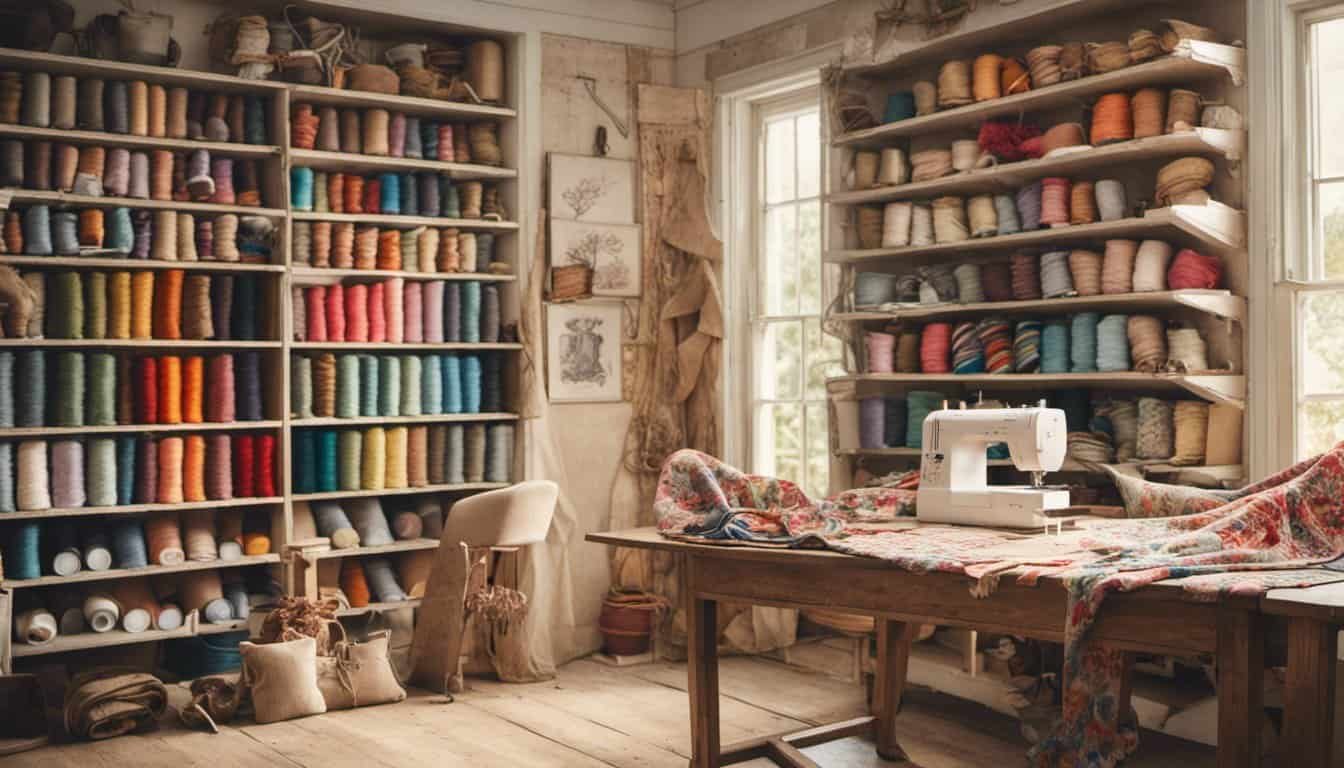
Inspirational Sources: Draw from Victorian fashion, industrial machinery, and classic literature to inform your design ideas.
Accessory Integration: Incorporate goggles, pocket watches, and top hats, ensuring they complete your costume and add functional details.
Adding Accessories
Enhancing your steampunk costume with accessories elevates the overall look and adds intricate details that define the steampunk aesthetic. Carefully selected accessories not only complement your outfit but also convey the unique personality of your character.
Essential Accessories
- Goggles: Position goggles on your head or around your neck. Choose designs with leather straps and brass accents to maintain authenticity.
- Pocket Watches: Attach a pocket watch to a vest or belt. Opt for vintage styles with visible gears and chains for added detail.
- Top Hats: Wear a top hat adorned with feathers, gears, or steampunk brooches. Ensure the hat complements the color scheme of your costume.
- Corsets: Incorporate a corset as a central piece. Select materials like leather or brocade and add lace or metal embellishments for texture.
- Belts and Buckles: Use leather belts with ornate buckles to cinch garments. Buckles featuring gears or intricate patterns enhance the steampunk vibe.
- Leather Gloves: Wear gloves made of leather or lace. Fingerless designs with decorative stitching provide both style and functionality.
Decorative Elements
- Chains and Cuffs: Integrate chains into your outfit by draping them over shoulders or attaching them to belts. Cuffs with metal accents add a refined touch to sleeves.
- Fringes and Ribbons: Add fringes or ribbons to jackets and skirts. Choose colors that contrast or match your primary fabrics for visual interest.
- Pins and Brooches: Secure pins or brooches featuring mechanical motifs to garments. These small details contribute significantly to the overall aesthetic.
- Clockwork Pieces: Incorporate clockwork elements like gears and springs. Sew them onto fabrics or attach them as standalone decorative items.
Practical Tools
- Safety Pins and Clips: Use safety pins and clips to attach accessories securely during crafting. They provide flexibility before finalizing placements.
- Glue Guns: Apply fabric glue to affix heavier accessories. Ensure the glue dries thoroughly to maintain the integrity of attachments.
- Sewing Supplies: Utilize needles and thread that match the color of your fabrics. Reinforce areas where accessories are attached to prevent wear.
Integration Tips
- Color Coordination: Match accessory colors with your main fabrics. Metallic tones like brass, copper, and silver work well with traditional steampunk colors.
- Layering: Layer accessories to create depth. Combine multiple items such as belts, chains, and watches without overwhelming the outfit.
- Balance: Distribute accessories evenly across your costume. Balance large statement pieces with smaller decorative items for a harmonious look.
- Customization: Personalize accessories by adding unique embellishments. Customize items to reflect your individual style and character backstory.
By thoughtfully selecting and integrating accessories, you transform your steampunk costume from simple attire into a richly detailed ensemble that captures the essence of the steampunk genre.
Conclusion
Creating your own steampunk costume is a fantastic way to express your unique style and creativity. As you bring together fabrics, gears, and accessories, you’ll discover the joy of crafting something truly personal. Remember to have fun with each step and let your imagination guide you. Whether it’s for a special event or just for the love of steampunk, your handmade costume will stand out with its intricate details and thoughtful design. Embrace the process and enjoy every moment of bringing your steampunk vision to life
